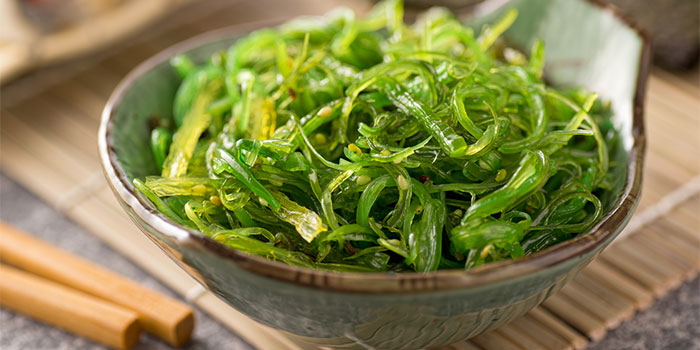
Pronounce it: see-weed
No matter what the shape or size, and whatever their colour, which ranges from red to black via golds and greens, seaweeds have a common background flavour that might be described as like iodine combined with fish oil.
The Japanese use a type of kelp (kombu) to make dashi, the stock widely used for soups and as a stock, and its gentle and refined flavour makes dashi one of the most approachable and widely enjoyed uses of a seaweed. More commonly experienced in the West, nori is the paper-thin wrap for sushi, made from a kind of algae.
Like it or not, seaweed’s oily, metallic iodine flavour is always there to some extent. If you can get over that, all sorts of comparisons are made between seaweed and land-based food but somehow seaweed always tastes of seaweed.
The best known use in the UK is the laverbread of Wales, a long-cooked variety of kelp, which has never found wide acceptance, even in Wales. Most seaweeds or sea vegetables offer good nutritional values – if you eat enough.
Read our guide on the health benefits of seaweed.
Availability
Prepared laverbread, a blackish greenish paste tasting largely of iron and iodine, and products made with laverbread, are available online. A wide variety of dried seaweeds/sea vegetables are also available in Asian shops and online.
Choose the best
There is no real way for an amateur to be able to judge without actual tasting. Best to buy in small quantities from a supplier who appears to have been in business for some time.
Store it
Commercially packed, hermetically sealed laverbread will have a Best Before date on the pack and this should be a matter of months rather than weeks. Follow the recommendations on the packaging of dried products.
Cook it
Laverbread is most commonly seen as an accompaniment to two of Wales’s most delicious products: cockles from the sea and mutton from the mountains. It can be incorporated or eaten with a wider range of foods that are robust in flavour, such as fried eggs with thick, salty bacon and ham, or peppery sausages, perhaps even with poached smoked fish.
An interesting, more commonly acceptable way to use seaweeds is as a garnish rather than as a main ingredient. Dry, crisp, black varieties look great when crumbled lightly on to poached fish; next time try a little in the poaching water.
Be the first to comment on "Seaweed"